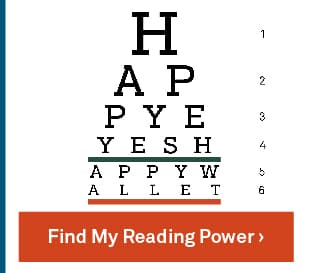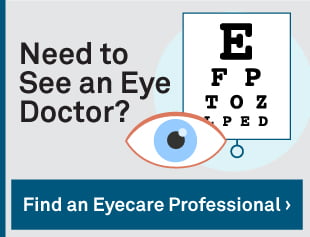You wear your reading glasses every day, but you probably haven’t thought about all the parts that work together to help you see more clearly. One of those important parts are the hinges.
The hinges on your glasses help keep the frame together. They connect the temples — the arms that sit on your ears — to the frame front. The hinges let you open and close your glasses by unfolding and folding each temple. It may surprise you to learn that there are actually several different types of glasses hinges.
What Are Standard Hinges?
Standard or non-spring hinges are the most common type of hinges used on glasses and sunglasses. Standard hinges are also called barrel hinges because they look like barrels. The hinges are small interlocking metal loops that are held together with a very small screw.
Standard hinges have three, five, seven, or nine loops. In general, thinner loops are used on thinner frames and thicker loops are used on thicker frames. These hinges are used on both metal and plastic frames.
Let’s look at the pros and cons of standard glasses hinges:
On the pro side, standard hinges are:
- Durable
- Easy to repair
- Easy to adjust at home if needed
As for the cons, they:
- Can only open up to 90 degrees
- May break if opened too wide
- May be uncomfortable for glasses wearers with wider faces
What Are Spring Hinges?
Spring hinges are more flexible than standard hinges and they can open slightly wider outward than 90 degrees. Frames with spring hinges are good for kids and for people who are rough on their glasses.
Here are some pros and cons to think about if you’re considering spring glasses hinges:
On the plus side, spring hinges can:
- Make your glasses easier to put on and take off
- Help your glasses fit more comfortably for an extended time
- Make your glasses more durable by giving them some added flexibility
On the negative side, spring hinges:
- Can wear out if the hinges are constantly flexed past 90 degrees
- Are not meant to be replaced, especially in less expensive glasses — in other words, if they wear out, you’ll need to get new glasses
180° Hinges: A Type of Spring Hinge
These hinges allow the temples to open a full 180 degrees so they are flush with the front of the frame. Glasses with 180-degree hinges are a great choice for kids because of their added flexibility and durability.
Other Types of Glasses Hinges
While standard and spring hinges are the most commonly found in eyewear, some other types of glasses hinges are also sometimes used. Each type comes with its own advantages and disadvantages:
Hingeless
As you may have guessed, hingeless frames do not use hinges to connect the temples to the front of the frame.
In the case of some children’s glasses, the frame may be made using a single piece of flexible plastic. This means the temples and frame front are one piece and don’t need to be attached with hinges. This also makes the temples flexible enough to bend out wide.
Pros:
- You don’t need to worry about fixing broken hinges.
- They’re durable enough for kids.
- The arms can open wide to fit different face sizes.
Cons:
- There’s not as wide a selection as there is for frames with hinges.
- They may feel loose on your nose.
- They can’t be repaired if one of the arms breaks off.
Japanese Hinges
A Japanese hinge is a five-barrel hinge with a spring in it. This makes it a bit of a hybrid between standard and spring hinges.
Pros:
- The hinges have fluid motion so the frame is easy to open and close.
Cons:
- They’re not widely available.
Ball-Shaped Hinges
On some frames, the hinge is actually a small metal ball. Attached to the end of each temple arm, the ball hinges are mounted within the top outer corners of the frame. Instead of making a folding motion, the ball rotates when you open and close the temples.
The ball hinges can be seen from the front and back of the frame, and may seem more prominent in the front when the glasses are folded closed.
Pros:
- The hinge doesn’t move when the temples are open or closed.
- It fits even on thin frames.
Cons:
- Dirt and sand may be able to get under the ball and loosen it.
- If debris can get under the ball, it may wear on the frame.
What Type of Glasses Hinges Is Right for You?
Hinges play a key role in ensuring that your eyewear is comfortable and durable. Understanding the different types of glasses hinges can help you choose the right eyewear for your lifestyle. We have a wide variety of reading glasses with standard and spring hinges so you can find your next perfect pair at Readers.com.
SOURCES
- The different parts of eyeglasses. Eyebuydirect. March 2018.*
- Glasses hinges. Glasses.com. Accessed December 2023.*
- What are the different types of eyeglass hinges? FramesDirect. Accessed December 2023.*
- Eyeglasses: The basics. All About Vision. February 2019.*
- Coming totally unhinged! So you want spring hinge glasses? That Glasses Guy. February 2023.
- Hinges always break! What makes a good glasses hinge? 3 barrels, 5 barrels, 7 barrels, oh my! That Glasses Guy. February 2020.
The sources listed here have been provided for informational purposes only. The citation of a particular source does not constitute an endorsement or approval of EssilorLuxottica products, services, or opinions by such source.
*Like Readers.com, Eyebuydirect, Glasses.com, FramesDirect, All About Vision, and AAV Media, LLC are affiliates of EssilorLuxottica.





0 Comments